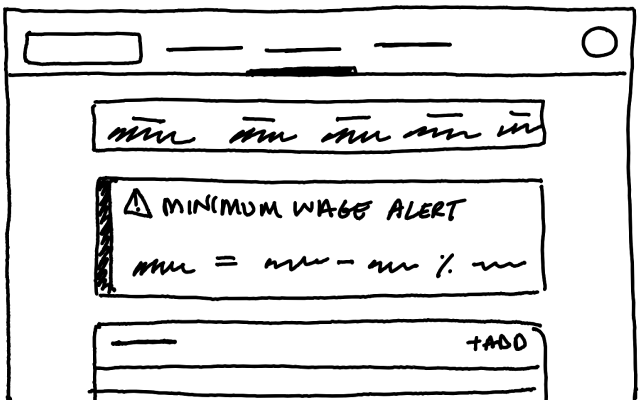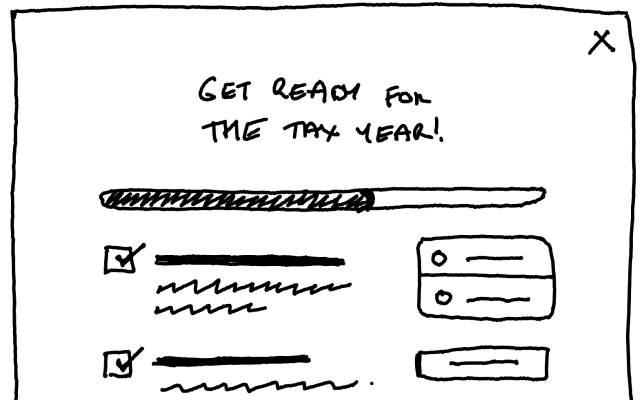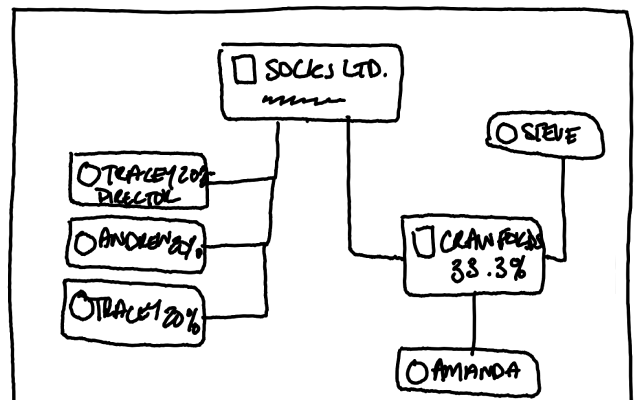Switching payroll software
Speed up the onboarding experience so payroll admins can focus on the next pay run
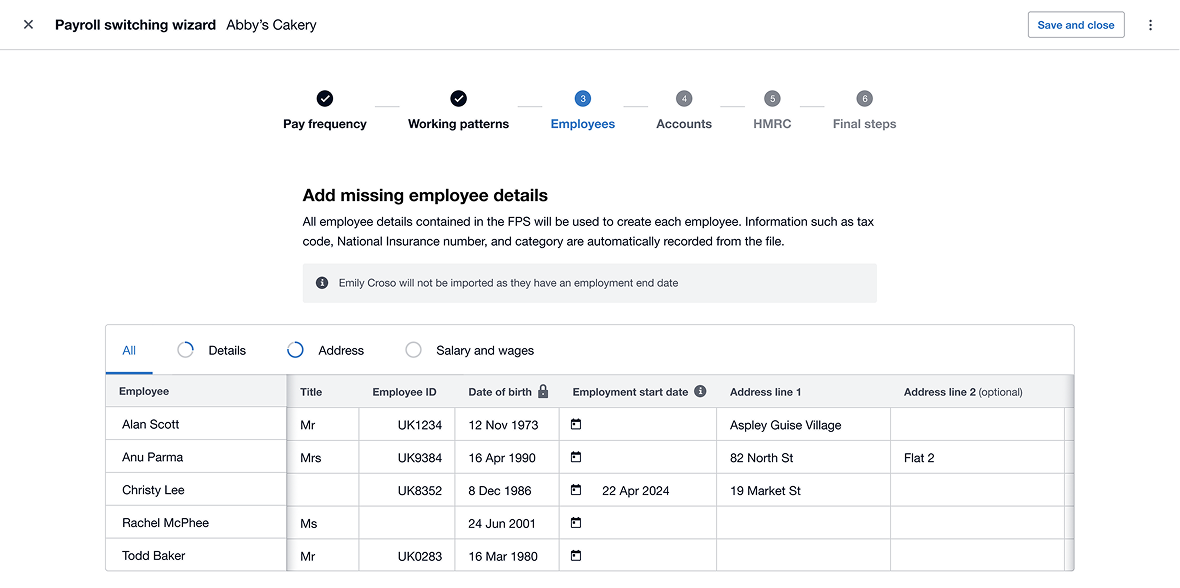
Opportunity
A large segment of our bookkeeping customers were not using our payroll software, but we could see they had employees. Moving these customers to our payroll product promised to not only increase company revenue, but it also made their engagement with Xero stickier.
However, our existing onboarding working was disjointed, highly inefficient, and inaccurate. This poor first touch experience had tremendous opportunity for improvement.
Result
Reduced payroll setup time for users switching from competitors by 62% (from 17min down to 6:30) while also achieving an 80% completion rate for users who successfully uploaded their FPS (Full Payment Summary) file.
Role
Lead designer
Big thanks to
Product manager
Business Analyst
Compliance officer
Lead engineer
Content designer
Onboarding designers
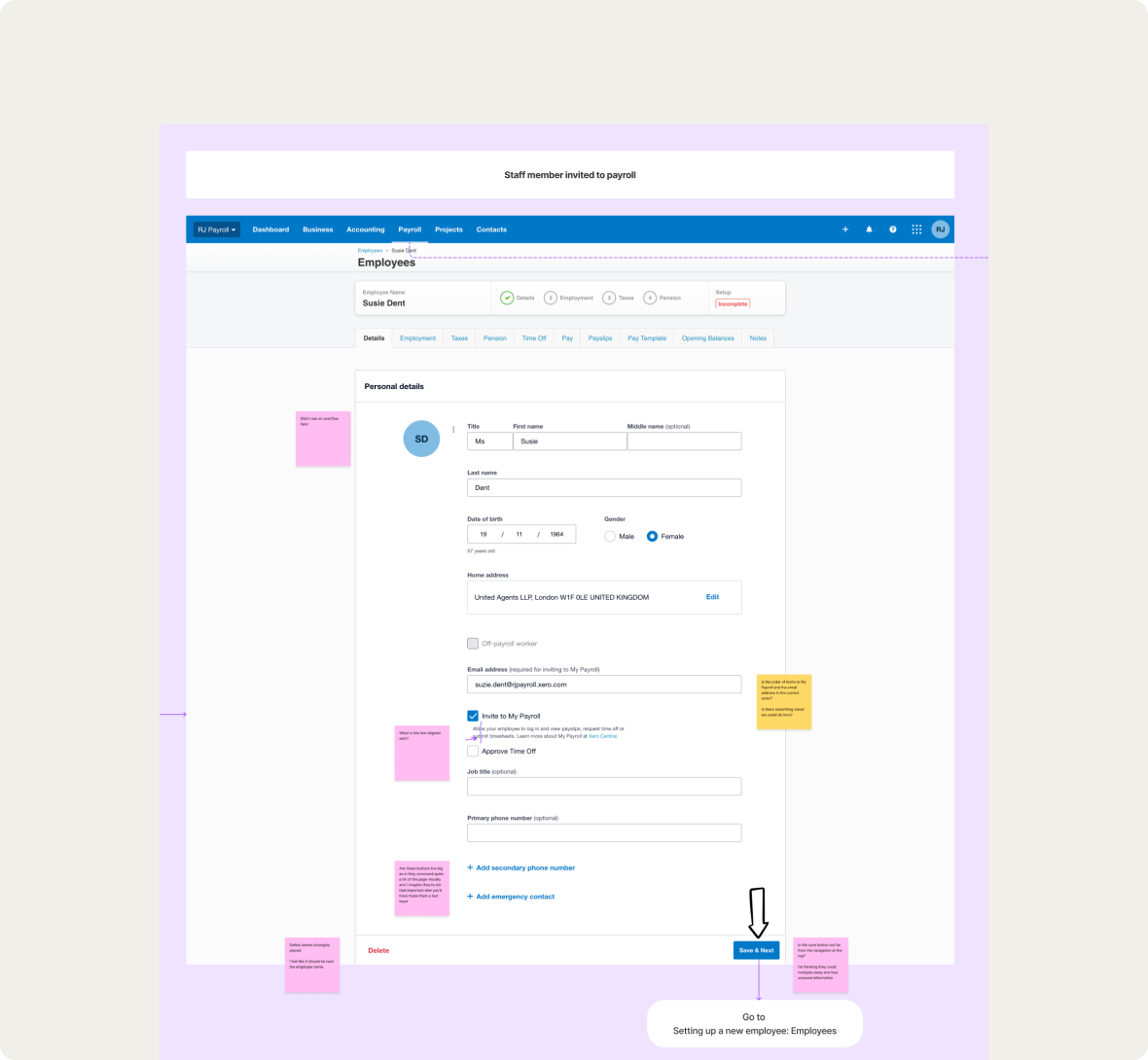
Understanding the current set up process
I conducted a comprehension heuristic evaluation setting up payroll and experienced multiple disjointed pathways often leading to dead ends, and a critical lack of explanatory guidance. Talking directly to customers I learnt about the errors they knew to avoid, their pathways and short cuts, and the long cumbersome waiting periods to get the information they need outside of our product.
All of this painted a picture of an experience that was both intimidating, error prone, and confusing for our customers. There were three teams assigned to work on the problem that I needed to work and collaborate with. One looking at onboarding patterns globally, the other setting up Payroll in all regions, and my team: Helping customers with payroll switch.
Team alignment on desired outcome
To address fundamental issues with our existing experience and align everyone, I facilitated a workshop with product and engineering teams that shared the current experience, and generated ideas on how we might improve each ‘job to be done’. It was during this phase that we decided to use the Full Payment Submission (FPS), a file sent to HMRC with some organisation and employee information, as a method to reduce manual input.
We then met with different payroll admins to check how easily this file was to get from our competitors before investing any further.
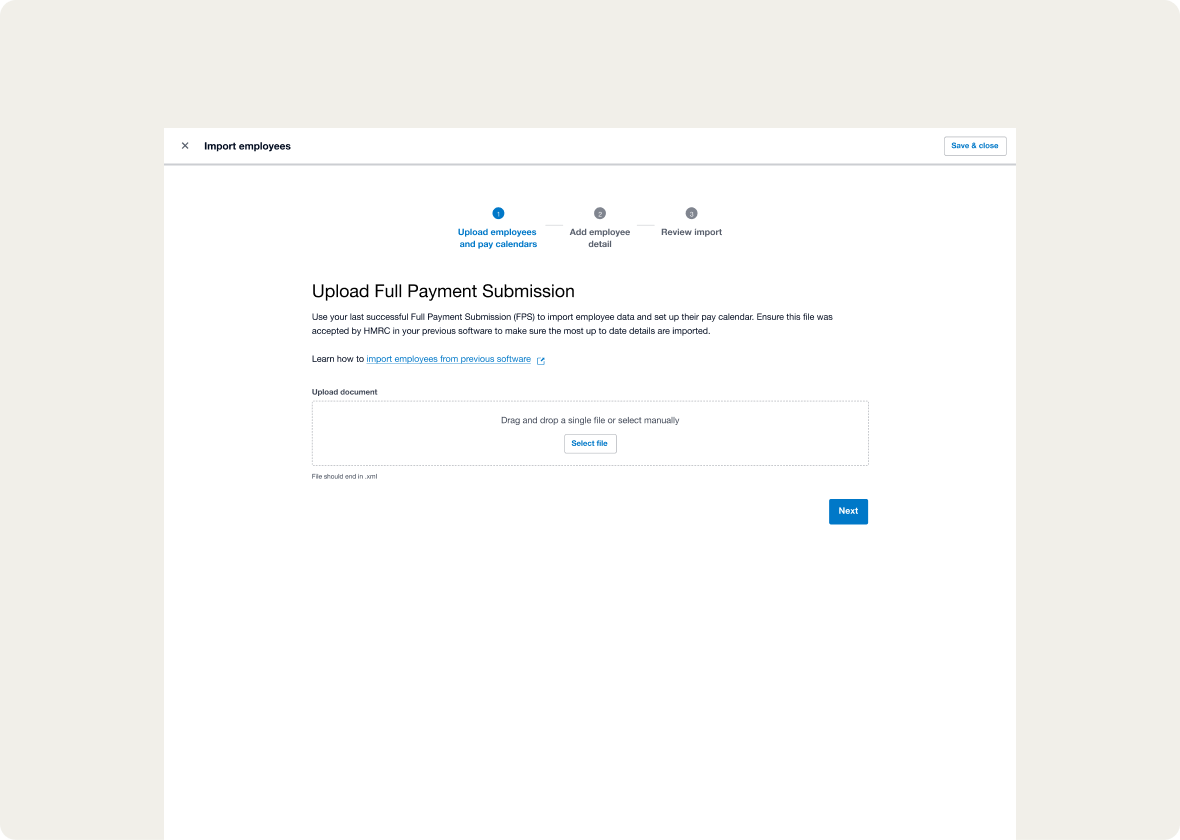
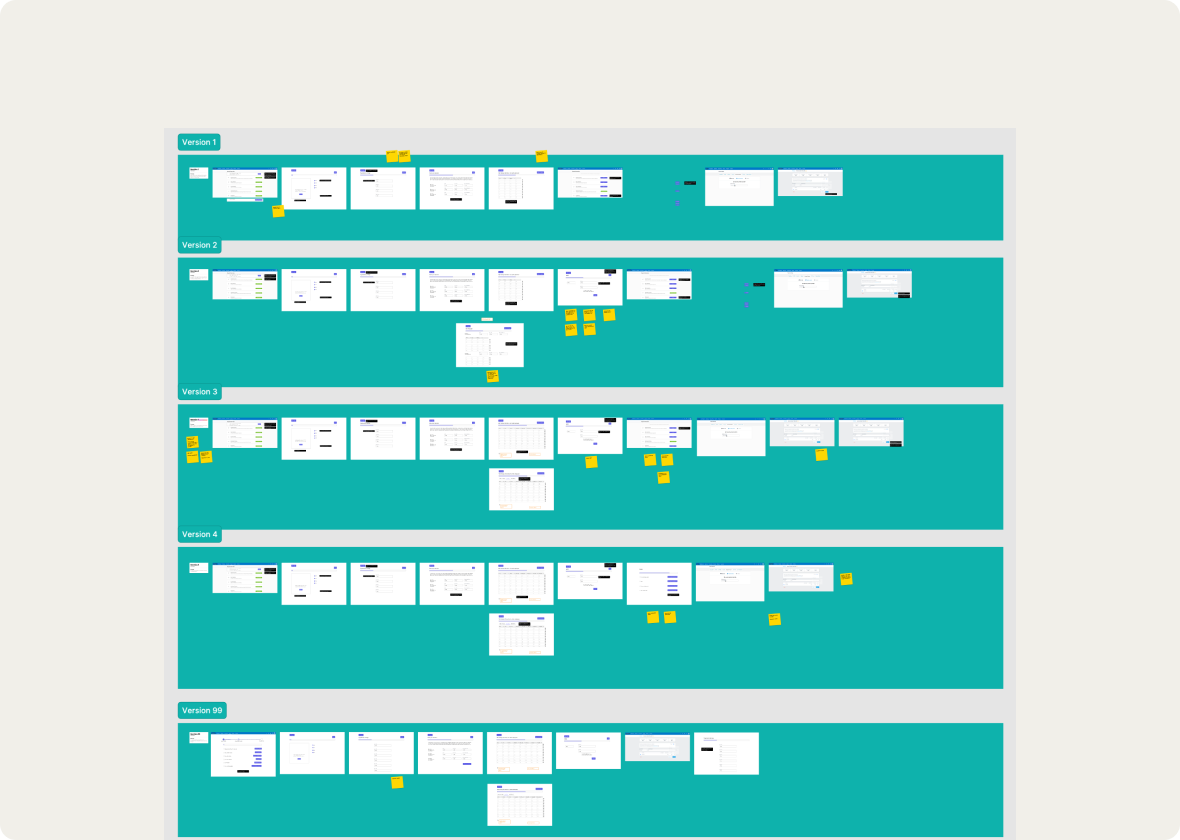
Bridging between two methodologies
We initially had a short deadline to deliver, so I worked with my team to quickly mock up the smallest viable solutions by building upon design work from other designers. I suggested we should tackle the most technically challenging component first, the employee upload, ensuring that even if the scope changed, we’d still be able to deliver a valuable, and functional improvement.
While the engineering team was highly supportive of an iterative, agile build, the product team, new to the role, desired a high fidelity end-to-end vision upfront. I consistently advocated for iterative development demonstrating its benefits for de-risking the project, but was unsuccessful influencing a more agile mindset.
To enable the project to move, I committed to designing both a comprehension end state, and the immediate needs of the engineers. Having strong support from the engineering team was crucial, empowering me to continuously refine designs as new insights emerged and the end destination changed.
Improving the landing page
One of the most difficult pages to design was the onboarding entry point due to conflicting priorities and timelines of different teams. I had always dreamed of a unified set up experience (even built a proof of concept with the engineers), yet we released with landing page with two choices to set up, ‘Set up Payroll’ and ‘Switch’. User testing showed how having two choices slowed down users on which to pick.
To improve the landing page, I removed the visuals which was distracting some members, so we could get alignment before building upon the design. Though this specific redesign wasn’t built, my ongoing advocacy and collaboration with the broader design and product teams led to my ideas being implemented in their work.
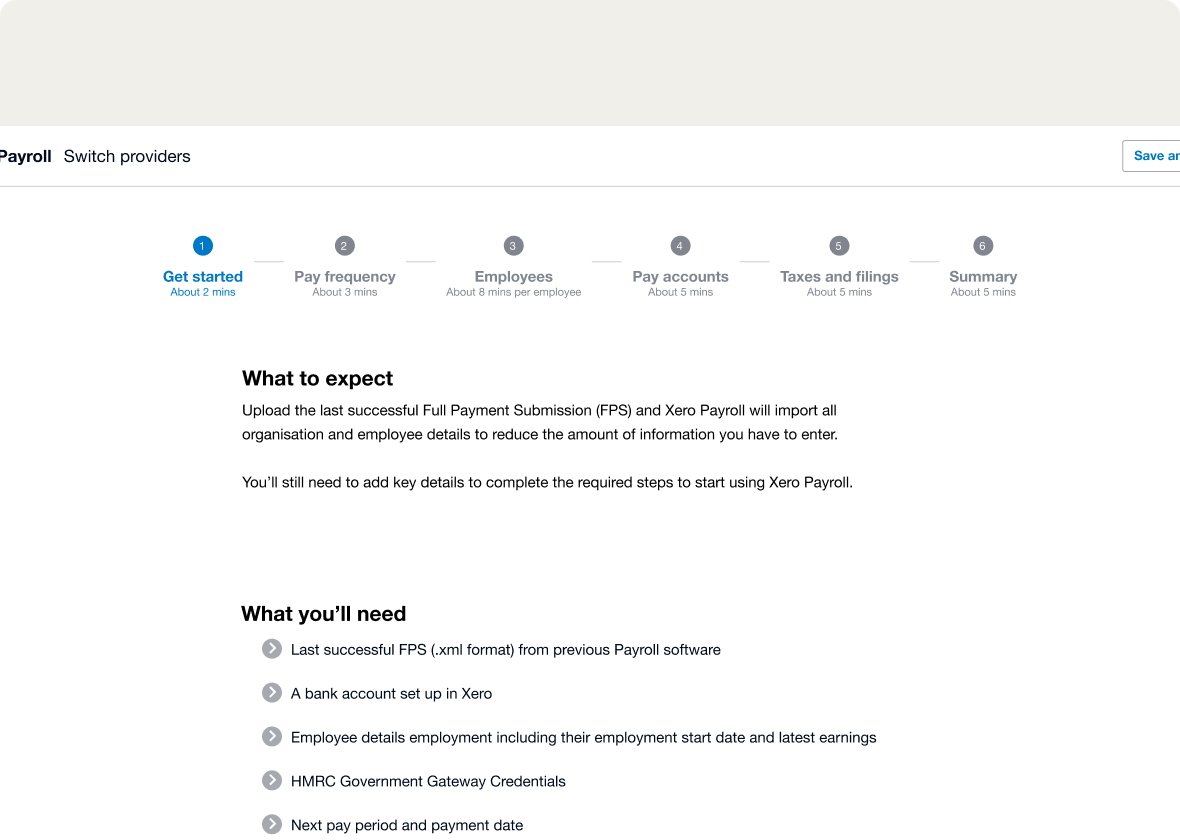
Streamline the process to add only what’s missing
The core of our solution was an intuitive wizard workflow designed to significantly streamline the complex process of setting up payroll when switching from a competitor. We deliberately chose a sequential wizard format to provide clear, step-by-step guidance, eliminating the need for users to navigate scattered sections of the product. This approach reduced cognitive load and provided a reassuring sense of progress.
The wizard’s central innovation was allowing users to upload their last Full Payment Submission (FPS) file sent to HMRC. From this file, we intelligently extracted as much organisational and employee information as possible, drastically reducing manual data entry for over 80 potential fields. The workflow then focused only on guiding the user through the remaining, essential information needed for a successful setup.
Strategic modular design
A key design principle was modularity, ensuring that each section of the wizard adhered to our design system rules and was future-proof. This modularity was critical for seamless addition or removal of sections as we learnt about regulatory requirements and other team’s releases.
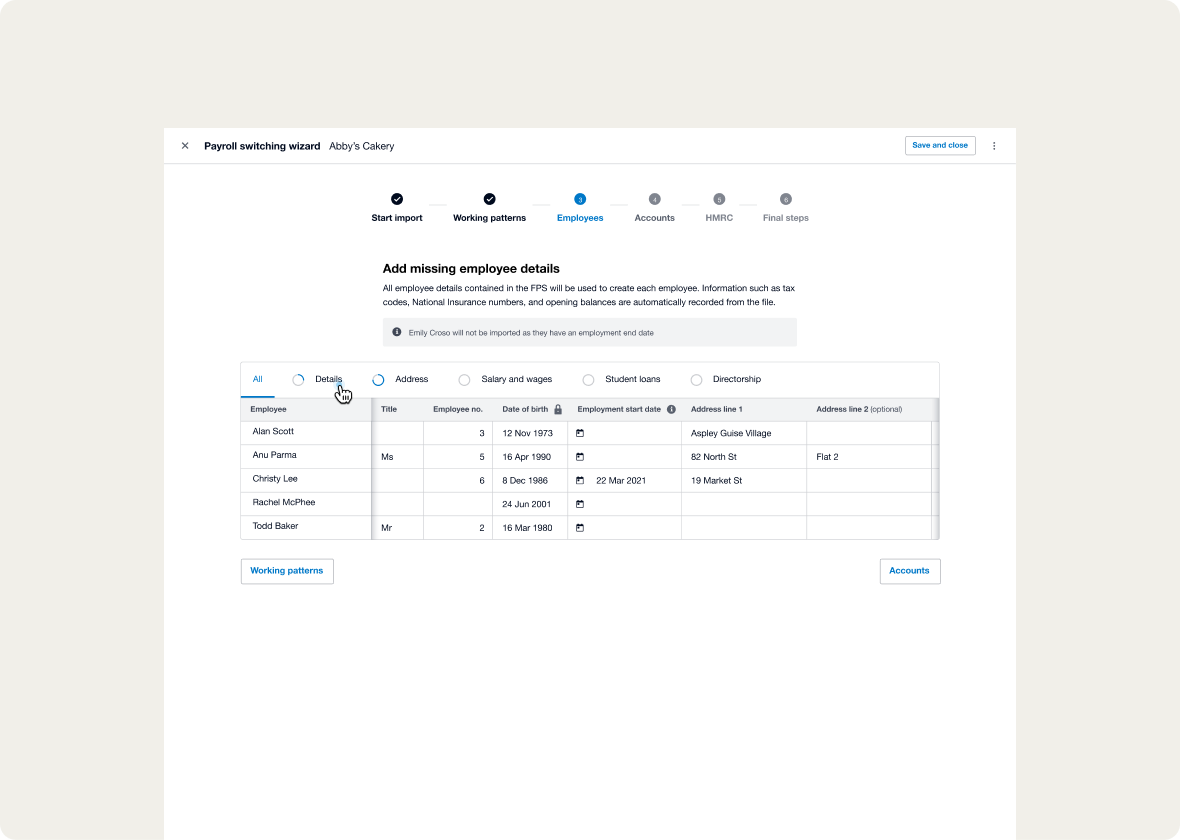
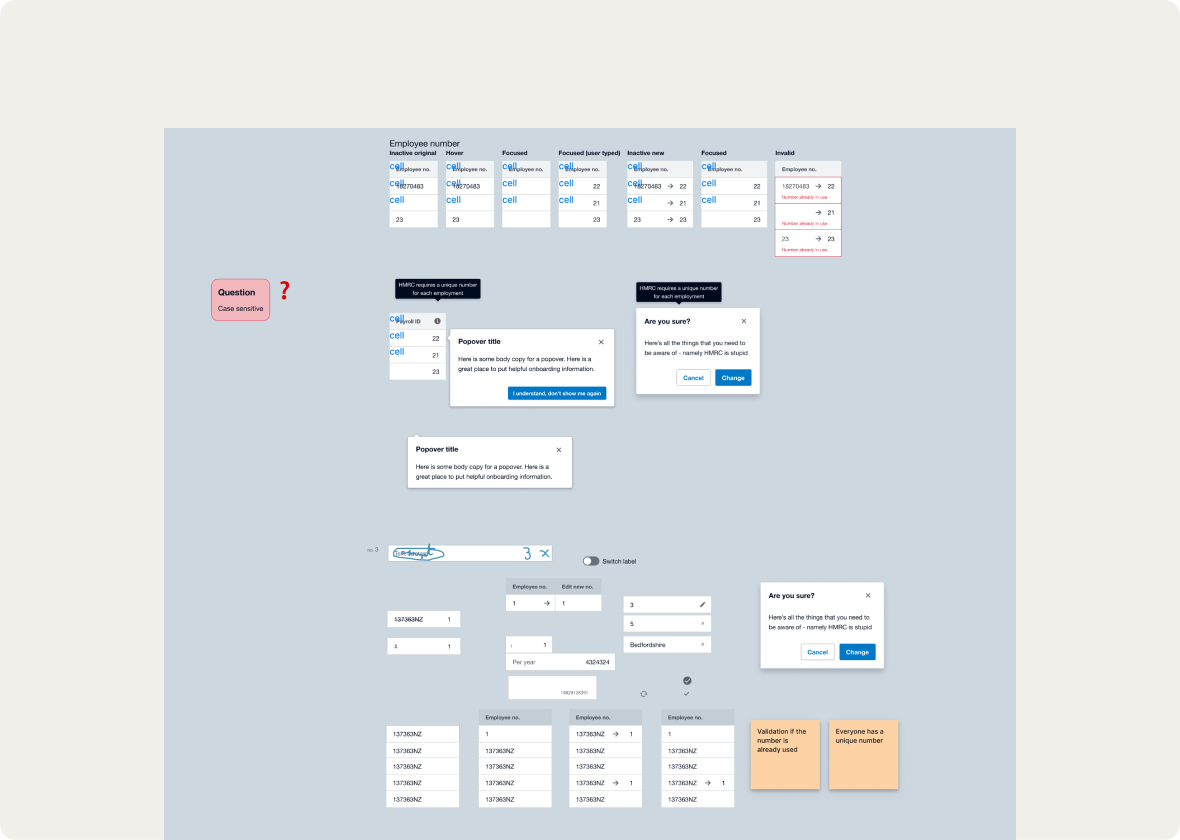
Difficult design challenges to overcome
As the project progressed we learnt more about what data fields were needed or not needed. For gathering the crucial missing employee information, I used a large editable table for its familiarity and flexible addition or removal of data as I hypothesised there would likely be changes.
The familiarity of spreadsheets was particularly beneficial for payroll business who could quickly migrate a client’s employee list. To try not overwhelm small business owners, I also introduced tabs to reduce content with mixed results. The headings matched the different sections of an employee record so they would be more familiar with the product.
Using a table was not without challenges. Some columns changed based on prior selections, other columns were uneditable, and some cells needed to retain what was previously written before the change.
Surprising success
The Xero Payroll Switching Wizard delivered significant and measurable impact for both users and the business. Our solution successfully reduced the time to set up payroll for users switching from competitors by a remarkable 62% (from 17 minutes down to 6:30 minutes). This drastic improvement in efficiency directly translated to a smoother, less frustrating onboarding experience. Furthermore, we achieved an 80% completion rate for users who successfully uploaded their FPS (Full Payment Submission) file, demonstrating the wizard’s effectiveness in guiding users through the entire setup process to a successful first pay run.
A key takeaway for me was acknowledging that delivering great results for the customer doesn’t always come with the perfect journey to get there.
Other projects
National minimum wage calculation
Supporting employers to confidently pay their employees above national minimum wage
End of tax year checklist
Guide payroll admins through the tasks to complete their payroll year end and get ready for the new year

